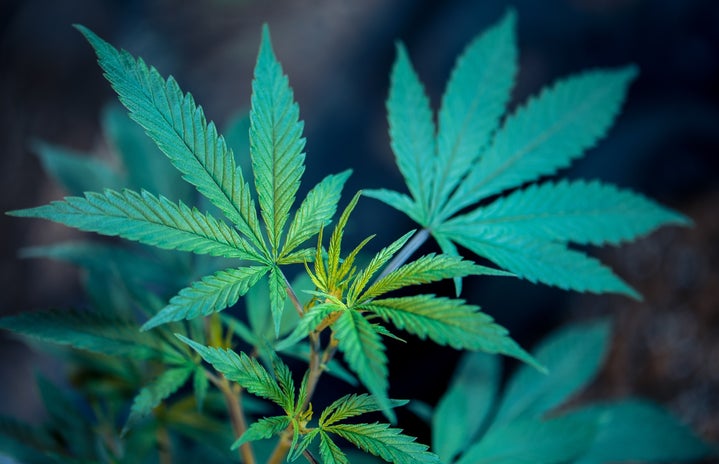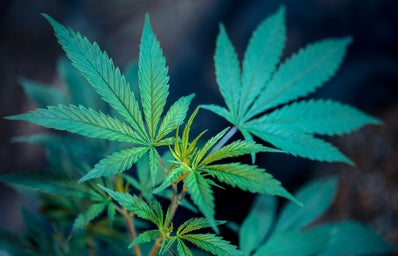First-year anniversary
What a year it’s been for marijuana enthusiasts, whose lives have been lit up – literally – ever since last October. Arguably a great day for Canadians all around, October 17, 2018 marks the day that marijuana became legalized in Canada. The totally legal recreational drug was passed by the Senate over the summer of 2018, based off of a promise that Justin Trudeau made upon becoming elected in the 2015 federal election.
Either way, I can’t complain and neither can you. This ever-evolving drug that used to be hushed at dinner tables is now one of the largest conversation starters amongst Torontonians. A recent study found 47 per cent of Canadians surveyed said they had tried cannabis in their lifetime. Over the course of the year, we’ve become more focused on the pot industry as a whole, and how society has progressed since the legalization, from newly-influenced public opinions and every step in between, to purchasing to the using of the drug.
Upon legalization, the Cannabis Act was made simple. Weed is only available for purchase to those over 19 years of age in most provinces and territories; in Alberta and Quebec, however, 18 is the legal age for purchase. Purchasing must be done at one of the following, depending on the province: private-licensed stores, government-operated shops, government-operated stores, or by phone. Each person’s legal possession limit [at a time] is of 30 grams of dried cannabis. The notion of growing cannabis is a process through which one is required to obtain a license to grow. Finally, importers and exporters of cannabis must hold a government-certified permit.
An avalanche of store fronts hit the cities over the course of this year – an estimated 350 across Canada alone. Dozens of stores have populated the streets of downtown Toronto, some examples including Tokyo Smoke, The Hunny Pot Cannabis Co., and Canna Cabana.
As great as it is to be able to purchase pot leisurely – and legally – according to The Guardian, Canada still has a long way to go in eliminating both the black market and impaired driving for good. In the past year, there have been over 7,000 provincial charges of possession. The weed community has shifted over the course of its legalization, and continues to do so, in both positive and negative aspects.
The problem with targeting impaired driving
Impaired driving has been a problem for years and scientists are honing in on the problems behind it, ready to make a change. Unlike alcohol, cannabis is measured in more than one way – through blood, oral, and urine tests. If cannabis is found present in one’s body, there is no way to know when “too much” is really too much. This stacks the odds against both police officers and the court. Due to the complexity of cannabis, law enforcement is still unable to set a maximum national standard for one’s cannabis intake. Different people react differently; a frequent user may display higher levels of THC in their blood but be less impaired than an occasional smoker with less THC and higher levels of impairment. Toxicologists are also unable to detect the difference between medical and recreational marijuana, which causes major confusion to law enforcers. In an article written by CP24, Andrew Murie, the CEO of Mothers Against Drunk Driving Canada (MADD), explained that it was unclear whether impaired driving has worsened or not over time.
The fact that no regulations have been set is problematic. For such an anticipated and busy market, it seems almost ignorant not to have concrete rules in regard to weed intake and driving high. As impaired driving is considered a leading cause of death and injury in Canada, law enforcement threatens a criminal charge, or even jail time, but has not clearly stated definite fine amounts. “There is no standard waiting time to drive after using cannabis. If you are using cannabis, do not drive,” the Government of Canada writes on their website. Before legalizing something, it seems almost certain that government officials would make sure there are no holes in their plan, but the failure to set a limit on marijuana use is an issue they didn’t consider, which causes negative implications to society. “If you were to be driving drunk, you would be reprimanded severely, but under the influence of marijuana, the stakes don’t seem as high – legalizing it has made it more accessible and easier to take advantage of [the weed],” Kirsty Dawson, a first-year arts student, says.
According to a study by MADD Canada, 32 per cent of teens do not consider driving under the influence of cannabis to be as bad as driving under the influence of alcohol. 25 per cent of teenagers’ parents believe that driving while high on weed is a better alternative than drunk driving. What they’re failing to realize is that impaired driving is impaired driving regardless of the substance being used. “I find it shocking that more people aren’t aware of the consequences that come with sitting behind a wheel either drunk or high,” says Erica Migas, a second-year business student. “People were smoking [weed] before it was legalized and they will continue to smoke [weed] now. So if you think about it, it wasn’t really a drastic change.”
Legal pot is pricey pot
Ever heard the saying, “Old habits die hard?”
Although legal weed has been at our fingertips for the course of a year, there is a very clear reason as to why we find ourselves subconsciously dialing our dealer’s phone numbers when we need to grab more.
Price point is EVERYTHING.
The difference in price between a legal and illegal gram of weed is dramatic. According to an article by CTV News, black market weed prices have been slashed in half since becoming legalized, with illegal weed being 36 per cent cheaper.
Not only that but upon purchasing weed at your local dispensary, growers and retailers split some of the profits and the government gets tax revenue. With prices soaring, there’s no doubt many would seek alternate arrangements for getting their weed. I would, too.
Ryerson students are fortunate enough to have a dispensary right next to the SLC. Tokyo Smoke opened at 333 Yonge St. back in April and has seen much success since. “Everytime I go in, there’s a line. Everyone wants a hit of Tokyo Smoke,” says second-year accounting student Mark Dewaart.
A female student at Ryerson University, who wished not to be named, speaks up about the black market. “I think that people who’ve been smoking for a long time will continue to go to the black market. There’s nothing special about dispensary weed, except you know you’re guaranteed good weed,” she says. “You never know what you’re getting at the black market, and people want to know what they’re smoking.”
A recreational smoker for years, she also compares Toronto to opposing cities. “More of my friends [from Kingston or Ottawa] still get their weed from the black market— there’s only one dispensary in almost every other city. Eventually though, I see weed being more popular than drinking because there are more health benefits— that’s the future for us.”
As relieving as it is to be able to smoke a spliff outside of the school without fear, some people are deeming dispensary weed as too costly and return to their dealers out of trust. “The weed industry is a growing market so there’s still hope for dispensaries to stay afloat, but sooner or later, it will be a battle for the best produced [weed],” third-year language and intercultural relations student Catherine Liotti says. Across Canada, the lowest prices begin in Quebec at $5.25 per gram, rising as high as $13.13 per gram in the Northwest Territories.
But let’s forget recreational marijuana for a minute – medicinal marijuana is also on the rise. Doctors keep dishing out prescriptions left, right, and centre, and they aren’t cheap – from $16 for lower-grade marijuana to as much as $60 for high-grade weed (the good stuff). As of 2014, there were over 58,000 approved patients in Canada, with more and more each day. Delivered to your door, the convenience of medical marijuana is uncanny, not to mention its benefits with helping treat anxiety, nausea, pain, and sleep. Mark Sraga told CBC News that only facilities recognized by Health Canada are allowed to distribute medicinal marijuana and must do so via courier. More action needs to be taken in order to make sure storefronts are following bylaws. Although shopping for marijuana in stores provides the customer with a more hands-on experience, where they get to see and smell the buds, the fast-growing medicinal marijuana storefronts are not what the government had hoped for upon the legalization.
Finally, this includes home-grown weed. Canadian residents are allowed to grow up to four plants per household, situated indoors or outdoors. There are no height restrictions, and this rule applies to all Canadians, 19 in Ontario (18-21 in other provinces). However, marijuana plants are difficult to take care of. When it comes to animals and pests, there is no sense worrying if you’re not successful the first time you attempt to grow. According to the Government of Canada, in 2017, only two per cent of Canadian residents grew marijuana themselves. That same study conducted in 2018 shows a jump to six per cent, with the numbers continuing to rise. However, with more dispensaries, it seems as though less people are inclined to continue to take care of their backyard grow-ops due to the effort and lack of convenience.
Public opinion; Does it exist?
With the nation-changing legalization of marijuana, there are a lot of factors to consider. Smoking a spliff sure might seem fun in retrospect, but what happens when the repercussions hit hard? The government made a mistake by implementing a law they too seem to know little to nothing about. As cliché as it is, the marijuana industry needs help. Focusing more on what we can do to regulate marijuana usage and keep impaired driving and illegal purchasing at an all-time low is what needs to happen. As a developed country, the best case scenario would be legalization fully coming to fruition amidst all its problems. Unfortunately, without the proper resources, who knows when or if that will become possible. Until then, all we can do is enjoy weed for what it is and give ourselves time to educate one another on both the pros and cons of being a marijuana user. No matter how unorganized the system is, people have been smoking weed for years and will continue to do so, no matter what.
So now that you’re done reading, roll a woods, cue “Highest in the Room” and let your mind take over. Seriously. You deserve it, Toronto.



